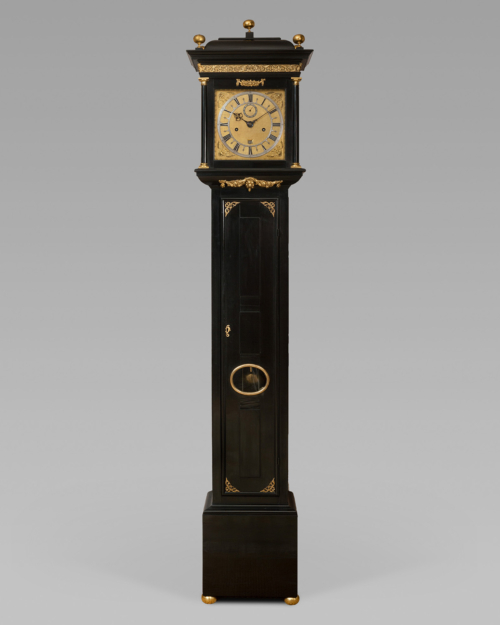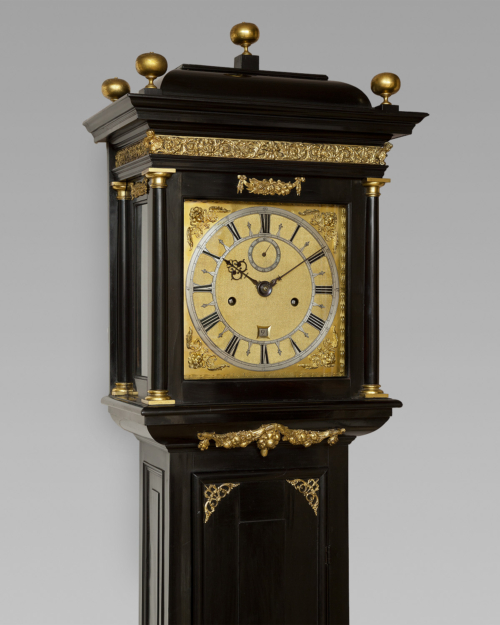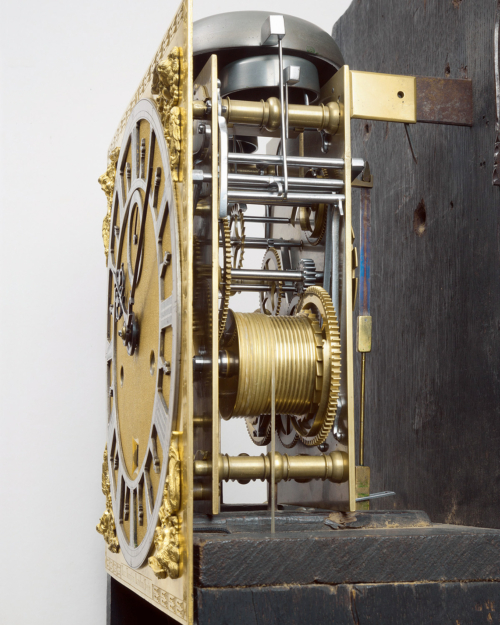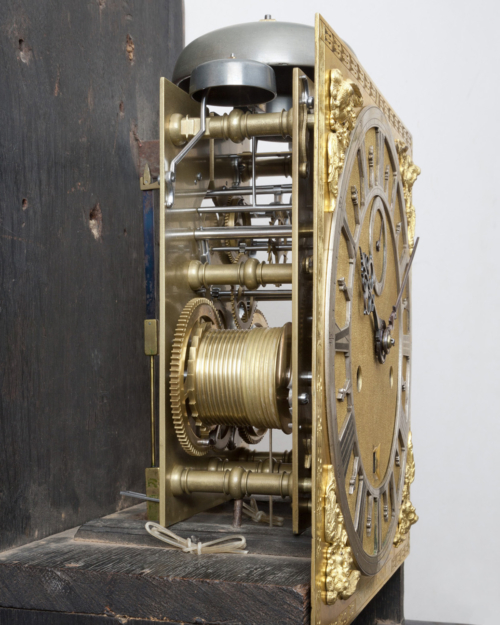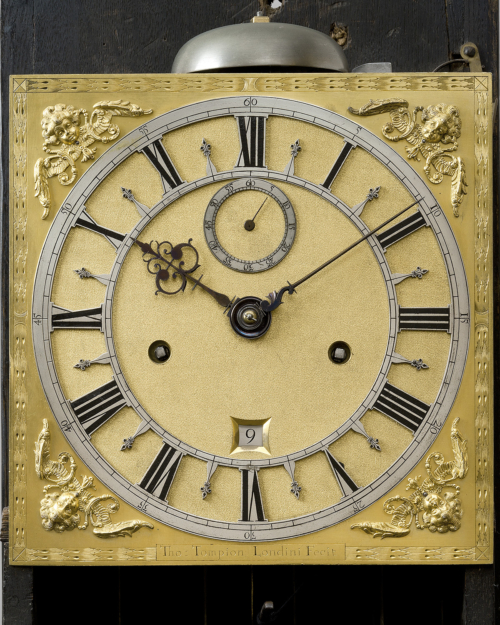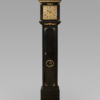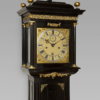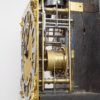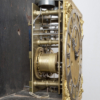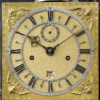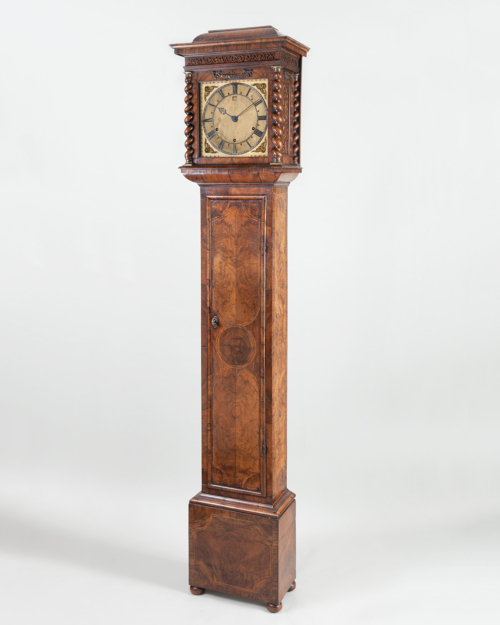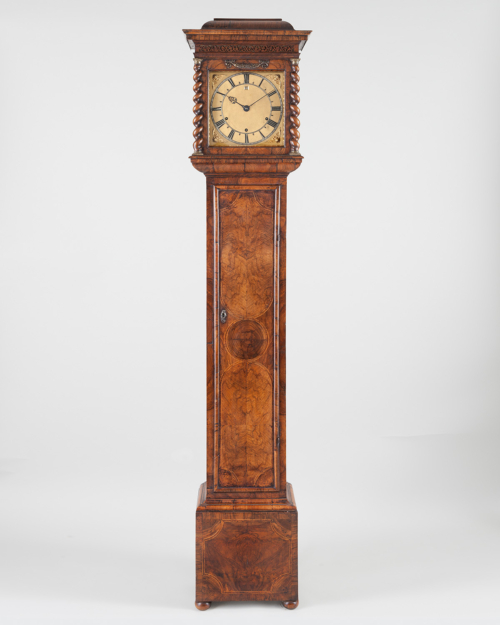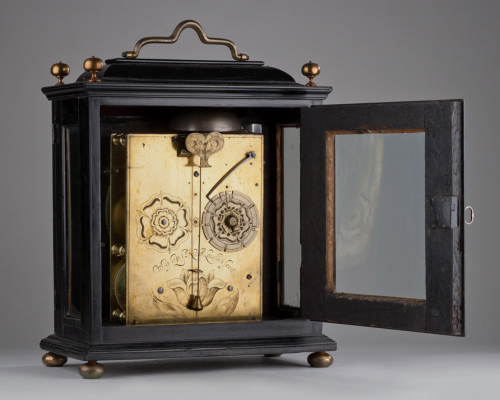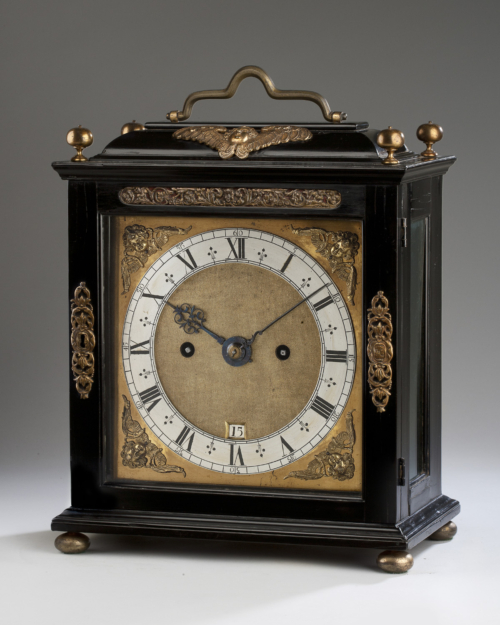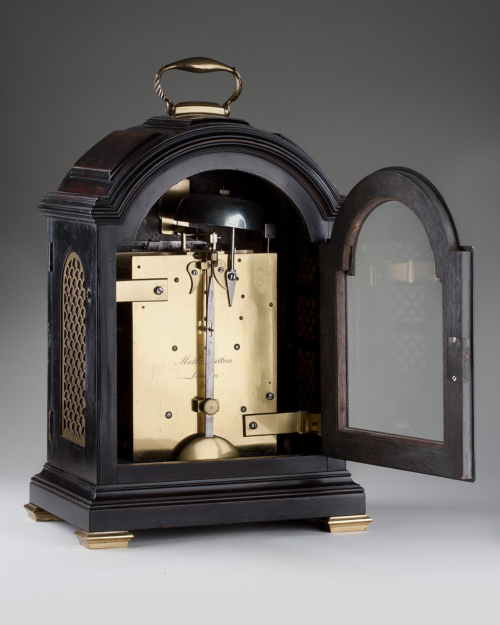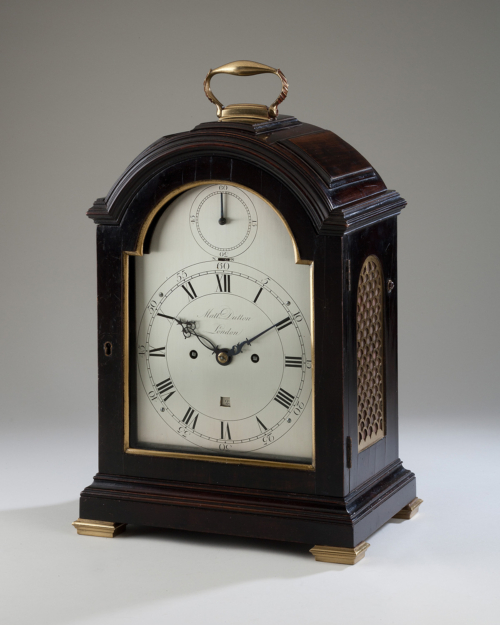| Height | 6 foot 7 inches |
| Case | Ebony veneered on oak with convex throat mouldings, panelled sides and trunk door with gilt-metal lenticle, eagle head escutcheon and foliate cast spandrels to the angles; cast and chased gilt-brass fruiting swag to the throat moulding beneath the rising hood with spoon-locking and latch, Doric columns, similar metal swags to the sides of the hood, shallow domed top with five ball finials. Ogee mouldings to the plinth on brass bun feet. |
| Dial | 10 inch square gilt-brass dial with four latched dial feet, double-wheatear engraved border signed Tho=Tompion Londini Fecit in a rectangular reserve along the base. Skeletonised chapter-ring with small fleur-de-lys half-hour divisions, subsidiary seconds ring and date aperture to the matted centre, blued-steel hands, winged-cherub spandrels. |
| Movement | 6⅜ by 8⅜ inch plates with six latched baluster pillars, going train with anchor escapement, brass rod lenticular pendulum with silvered rating nut, outside countwheel for the Roman notation strike on two bells and half-hour strike on a third, bolt-and-shutter maintaining power. |
| Duration | Month |
| Provenance | Sydney Exshaw, and sold, by order of his executors, Christie’s, London, 23rd June, 1960, lot 22 to R A Lee. Samuel Messer collection, and sold, by order of his executors, Christie’s, London, 5th December, 1991, lot 36 (£134,100). |
| Literature | Dawson, Drover & Parkes, Early English Clocks, Woodbridge, 1982, p.202-3, 271-3, pl. 270, 370-2. |
| Escapement | Anchor. |
The Roman-Striking Tompion circa 1680
An important Type 1 ebony and gilt-brass mounted Roman striking month-going longcase clock
This clock is one of only two known in which Tompion used Joseph Knibb’s system of Roman-notation striking. Nonetheless the movement is of typical Tompion sturdiness in comparison with Knibb’s characteristic lighter construction. Perhaps as a mark of Tompion’s authorship, despite it being a Roman-striking clock, he has retained a numeral IIII on the (admittedly skeletonised) chapter-ring instead of the IV as commonly used by Knibb for such clocks.
Product Description
This clock is one of only two known in which Tompion used Joseph Knibb’s system of Roman-notation striking. Nonetheless the movement is of typical Tompion sturdiness in comparison with Knibb’s characteristic lighter construction. Perhaps as a mark of Tompion’s authorship, despite it being a Roman-striking clock, he has retained a numeral IIII on the (admittedly skeletonised) chapter-ring instead of the IV as commonly used by Knibb for such clocks.
Additional information
| Dimensions | 5827373 cm |
|---|

